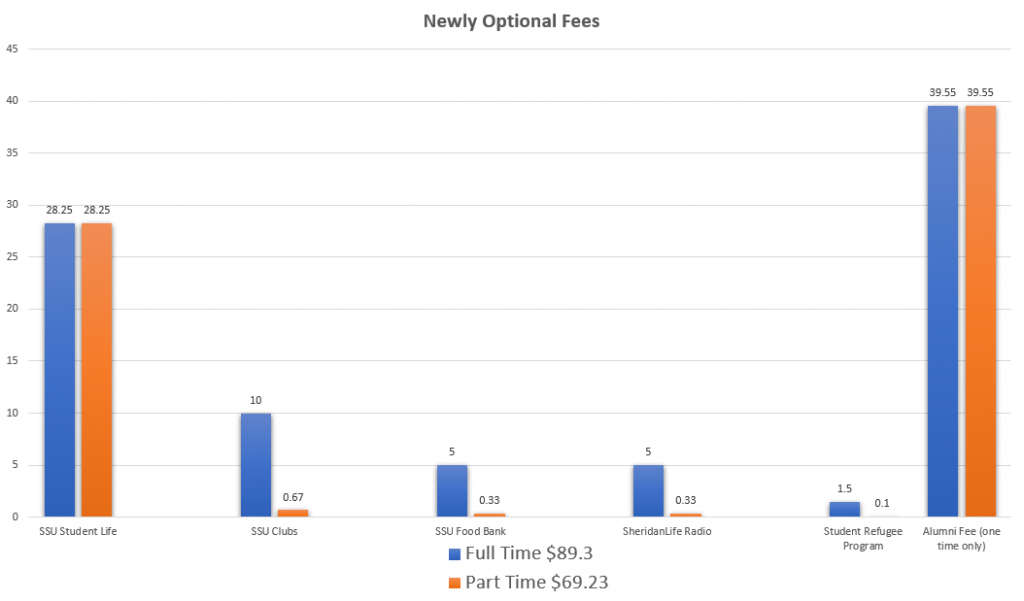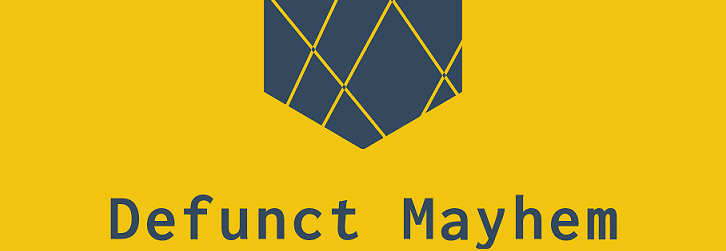“Let’s live in the real world here,” is what Justice Huscroft of the Ontario Court of Appeals said to lawyers representing the Government of Ontario in Tuesday’s hearing regarding the Student Choice Initiative.
The province’s legal team was arguing that post-secondary institutions could choose not to accept provincial funding if they had an issue with the tuition framework provided by the government.
The Canadian Federation of Students and the York Federation of Students filed a joint injunction against the province in May 2019 saying that the SCI included in the tuition framework conflicted with the autonomy of universities and part of the Ontario Colleges of Applied Arts and Technology Act.
The case was ruled on by the Divisional Court of Ontario on Nov. 22 2019 in favour the CFS and YFS ruling that the policy the government proposed was out of line.
The hearing Tuesday was the chance for the province’s legal team to appeal the Divisional Court’s decision.
A decision from the Court for Appeals is not likely anytime soon, and students groups will be waiting with bated breath to find out if they can return to business as usual.
“We’ve been given the estimated timeline of two to four months,” said Kayla Weiler, CFS-Ontario’s National Representative.
“That benefits us a lot, because regardless of the appeal[‘s result], the SCI remains unlawful,” said Weiler. She noted that student unions have been struggling to provide support to students throughout the pandemic, so the longer things remain stable, the better.
The Appeal hearing
On Tuesday, lawyers representing the Government of Ontario presented arguments in favour of the Student Choice Initiative policy that was included in the Mar. 2019 Tuition Fee Framework for universities and colleges as presented by the Minister of Training, Colleges and Universities. (When the framework was published MPP Merrilee Fullerton filled the ministerial position. In 2021, MPP Ross Romano is the relevant minister.)
The argument started off “too granular” for Justice Huscroft. who asked for clarification early on.
The provincial representatives (the appellants) argued that the province was entirely within its right to impose the restrictions on post-secondary ancillary fee funding.
The appellant team said that the cabinet decision that resulted in the tuition framework was not subject to a court decision because the power of the Crown in Ontario superseded the judicial system’s ability to arbitrate.
The appellants argued that the tuition framework was a contract with the university and college systems and that they were within their legal purview to change the terms of how the institutions receive funding (creating an essential vs non-essential fee structure for ancillary fees spilt between three categories).
They also postured that the Provincial Government sought to reduce the cost of education for students and that the ability to opt-out of ancillary fees coupled with the 10% reduction in tuition was a way to do so.
In the case of student groups suffering financial losses, the appellant’s argument was that “the government is allowed to choose winners and losers,” but not cause harm. Implying that, while student groups may be harmed, that was not the intention of the policy.
The respondents – in this case the victors of the injunction to the Divisional Court – had three main arguments to rebut the appellant’s winding and convoluted statements.
The lawyers from Goldblatt Partners representing the CFS and YFS argued three main points:
- That the province overstepped its mandate and infringed upon the autonomy of universities provided by the University Acts that govern each institution.
- That the province designed the SCI in bad faith with the aim of targeting politically unwelcome student associations on campus’ across the province.
- That the SCI did not follow the process of procedural fairness.
The respondent attorney’s presented evidence from expert witnesses whose testimony was heard by the Divisional Court, and restated the arguments made at that time.
1/3The legislative intention behind the Universities Act was meant to prevent government interference.
— Defunct Mayhem (@defunctmayhem) March 23, 2021
The directives from the province (SCI) disturb student governence as it has existed for over 50 years
3/3 The University Act binds the crown.
— Defunct Mayhem (@defunctmayhem) March 23, 2021
and the province cannot circumvent the clear intention of the university act by imposing backdoor spending conditions.
Following the submission by the lawyers representing the CFS and YFS, several additional groups presented supporting arguments for the cases through legal intervenors.
The government’s appeal was supported by B’nai Brith of Canada League for Human Rights who argued that some students did want to opt-out of student associations.
However, “political arguments, such as the one advanced by B’Nai Brith, cannot be used to overcome the legal argument advanced by the Applicants” said the decision from the Divisional Court being appealed.
The respondent’s intervenors included The University of Toronto Graduate Student Union, The Association for Canadian Clinical Legal Education, A Coalition of five Canadian Universities including Carleton University and Queen’s University, and Start Proud and Guelph Queer Equality.
The intervenors on behalf of the respondents reiterated the arguments about how the SCI would challenge the autonomy of Universities, presented the argument that the framework is not equivalent to a contract, emphasized the harm the SCI would do to student groups whose funding has been decided by democratically run referendum questions, emphasized the argument that the government negotiated this with bad faith, and said that the policy has the potential to impact university autonomy and infringe on academic freedom.
The intervener says that the autonomy of universities is buttressed by their position in society. If their autonomy is broached that could threaten academic freedom.
— Defunct Mayhem (@defunctmayhem) March 23, 2021
One additional intervenor, representing Canadian Journalists for Free Expression said that if the court found both arguments to be equally as compelling then they urged the Appeals Court Justices’ to side with the Divisional Court’s ruling. They noted that post-secondary institutions are places of learning – including how to be a member of society, and that being a member of a student association is a practical education about the importance of the freedom of association.
At the end of the hearing, the appellant team made a closing statement emphasizing that the government has no reason to take direction from the Court, and that, even if the SCI was a bad decision, it’s the government’s right to make that call.
The appellant says that the rationale for the SCI has not actually been challenged by any of the arguments today.
— Defunct Mayhem (@defunctmayhem) March 23, 2021
They say it might be a bad decision, but the Court cannot decide if it is.
The Divisional Court Decision
“In a unanimous decision, three judges of the Ontario Divisional Court upheld a judicial review challenge brought by the Canadian Federation of Students (CFS) and the York Federation of Students (YFS), and quashed the Ford Government’s so-called “Student Choice Initiative,” says a post summarizing the Divisional Court’s decision from 2019 on the Goldblatt Partner’s website.
“In its decision, the Court struck down the government’s attempt to require universities and colleges to prevent student associations from receiving student fees that had been democratically determined and supported by students,” it says.
“The Divisional Court held that the directives were “not authorized by law and are inconsistent with the autonomy granted universities, bedrock principles on which Ontario universities have been governed for more than 100 years,” reads the statement.
“The Court also noted that, other than Premier Ford’s stated reasons for targeting student associations (i.e. that they “we all know what kind of crazy Marxist nonsense student unions get up to”), the government had entirely failed to explain why it had concluded that “of all the components of ancillary fees charged to college and university students, only one – student association fees – was deemed by Cabinet to be non-essential.”
In conversation about the case as a whole, Kayla Weiler of the CFS said that students had a stronger argument from the beginning.
“It was always meant to be an attack [on student organizing],” Weiler said.
“The minister never met with us, the minister never consulted [students],” she said. “they were just really careful with their language so that it could be debatable.”
A full summary of the case and decision can be found here: Canadian Federation of Students v. Ontario
The Student Choice and the Damage Done
The original proposal presented in the first draft of the Province of Ontario’s tuition framework required universities and colleges to segregate their student fees into “essential” and “non-essential” categories.
The Student Choice initiative is one prong of a three-pronged policy change from the Ford government. It allows students in post-secondary institutions to opt-out of democratically decided auxiliary fees.
In January 2019, the province of Ontario announced its intention to mandate a 10% reduction to domestic student tuition. This move was briefly praised before an announcement that detailed the reduction of the Ontario Student Assistance Program’s (OSAP) grants, and the eradication of the free tuition for students from low-income households.
In the summer of 2019, the CFS filed an injunction alongside the York Federation of Students against the government policy, claiming that parts of the post-secondary platform that had been ushered in by Merrilee Fullerton were in conflict with section seven of the Ontario College of Applied Arts and Technology.
For a full timeline of events, scroll through the tool below:
In the CFS media advisory prior to the Divisional Court date, the key facts being contested were listed as:
• The SCI has arbitrarily deemed certain ancillary fees non-essential and optional for students, including students’ union membership, campus media, food banks and LGBTQ support centres.
• The vast majority of ancillary fees have been deemed essential and remain mandatory, including fees for athletics, student ID’s, and technology upgrades.
• The SCI has been applied inconsistently across institutions, leading to widespread and unnecessary confusion for students and institutions.
For decades, students at post-secondary institutions in Ontario have paid ancillary fees on top of their tuition. These additional fees were decided two main ways. Either the institution would introduce new fees to fund some sort of service, or the student body would vote on a referendum question that would be recognized by the institution and be charged alongside tuition.
For example, students at Sheridan College would still be paying hundreds of dollars in ancillary fees compared to the $50 or so they would save with the SCI. The first graph below shows fees that were proposed to be “non-essential” and the second graph shows those fees that would remain “essential” This is not an anomaly, but the norm.


Primarily, student fees voted on by students funded something student-focused. Oftentimes, this meant that new services not being offered by the institution or clubs that students recognized the need for would be able to form (health insurance, transit passes, legal/tenancy help, music/speaker events, student space, insurance for clubs, on-campus restaurants, student food-banks, DIY bike centres, SafeWalk programs, equity-based clubs, and Student governments to name a few things).
The fees voted on in referendum routines could (and still can) be revoked in an equally democratic vote.
It’s not a mystery that the price of post-secondary tuition has been steadily increasing over the past fifty years, but ancillary fees were not, and still aren’t, the primary issue affecting the affordability of education.
Legality aside, it has been clear from the get-go that the SCI was not going to save students much money at all once the numbers were compared. The fees put on the non-essential list by the government paled in comparison to the ancillary fees still “essential.”
At the end of the day, it remains to be seen what decision the Ontario Court for Appeals will make, and we may not know the outcome until the summer.







Your writing resonates with me.